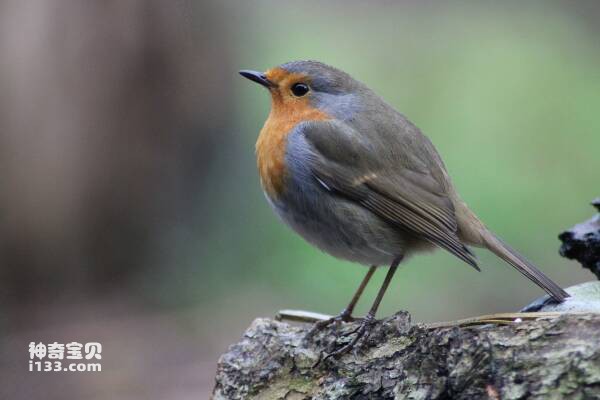The Eurasian robin (scientific name: Erithacus rubecula), also known as the robin, is a small passerine bird. It was once defined as a thrush subfamily and is now classified as a flycatcher. It is very common in Europe, from Siberia to Algeria, as far away as the Azores and Madeira Islands in the Atlantic Ocean, and in the Caucasus Mountains in the southeast.

Features and Appearance:
Size: Robins are medium in size, about 20-28 cm in length.
Plumage color: The back of an adult robin is dark blue-gray, the head and tail are black, and the underparts are orange to orange-red. The female bird is slightly lighter in color.
Living habits: Robins like to live in open meadows, woods and city parks. They feed on bugs, insects, berries and fruits and are often found in grassy areas.
Chirp: A robin's chirp is clear and sweet, usually a series of whistles or trills.
Distribution area:
Robins are mainly found in North America, including Canada, the United States, and Mexico. They migrate during different seasons, and robins in southern areas sometimes migrate to warmer areas to spend the winter.
Breeding habits:
Robins have their breeding season in the spring, when they build nests in the woods, with the female incubating the eggs and the male helping to raise the chicks. Generally, a clutch will lay 3-5 blue eggs.
Relationship with humans:
Robins are often regarded as one of the iconic birds of North America. They are common in cities and rural areas and often attract people's attention and love.
Conservation status:
Due to the large population and wide distribution of robins, there are currently no serious threats and they are classified as a "least concern" species.
The robin's distinctive appearance, melodious song, and habits close to those of humans make it a striking and popular bird to observe.
animal tags: Robin
We created this article in conjunction with AI technology, then made sure it was fact-checked and edited by a Animals Top editor.